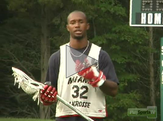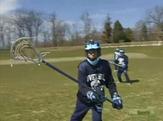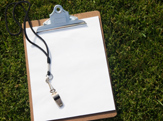PlaySportsTV Lacrosse
10 Important Boys’ Lacrosse Rules

A coach who explains lacrosses rules will promote safe play.
Coach safety as well as lacrosse skills
By Craig Haley
PlaySportsTV Managing Editor
Safety is a big part of coaching lacrosse. The sport involves a lot of contact, so youth coaches must not only stress skill development but also explain lacrosse rules to youngsters to promote safe play.
It’s especially important to coach beginners about the proper way to handle their lacrosse stick.
Following are 10 important rules to coach to your youth lacrosse players:
Offside. Midfielders can enter any area of the field, but attackmen, defensemen and goalies are confined to their area of the field. To prevent an offside, a team must have four players on each side of the field at all times.
Face-offs. When the official blows his whistle on a face-off, the four players in the wing area (two from each team) that surrounds the two face-off players at midfield can release to get the ball, but the other players must wait until a player has gained possession of the ball or the ball has crossed the goal line.
Body checks. Think of a baseball player’s hitting zone. A boys’ lacrosse player can make only a body check to the front side of an opposing player and between the knees and shoulders. It is illegal to check to the head or back side. Also, if a player is in an unprotected position – say he’s scooping a ground ball – it is illegal to check him.
Slashing and spearing. In boys’ lacrosse, an illegal slash is a stick check to the helmet or back, or a poke check to an opponent’s body other than his gloved hand as he holds the stick. In the bantam division, a one-handed check is considered a slash. A spear - hitting an opponent with the helmet - also is illegal.
Holding. Just as a boys’ lacrosse player cannot hold another player with his hands, he can’t use his stick to hold a player with or without the ball. On ground balls, it is considered holding if a player uses his stick to deny another player the ball.
Unnecessary roughness. This lacrosse rule often is a judgment call of the referee. Basically, a lacrosse player can’t make an excessive check against an opponent. He can’t step into a check from more than five yards or two steps away. Also, he must attempt to slow down if the offensive player has just released the ball.
Offensive interference or screen? An offensive player cannot purposely impede a defensive player’s path with his body or stick. Although this is not a time-serving penalty, the offensive team loses possession of the ball. An offensive player can screen a defender if the two are near the ball, but the screener must have his feet stationary and hold his stick up straight.
Kicking a stick. Obviously, kicking is not allowed in boys’ lacrosse. It also is illegal to kick an opposing player's lacrosse stick, even inadvertently. This happens when players are tightly bunched and trying to move a ground ball to open space.
Crease violation. Many shots are taken from close range and attackmen cannot step on or within the lacrosse goalie’s crease until the ball goes into the net. This does not pertain to an offensive player being pushed inside the crease by the defense. It’s best to practice footwork around the crease, so attackmen learn to avoid stepping on and into the crease.
Goalie clear. When a lacrosse goalie gains possession of the ball, he has four seconds to clear the ball from his crease or must step outside the crease with the ball.
###
Instruct the best coaching techniques through PlaySportsTV lacrosse training plans.







